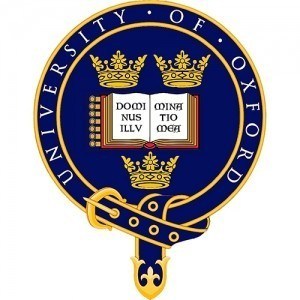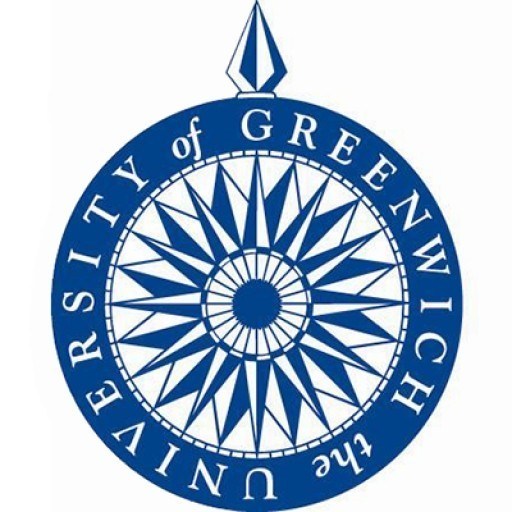Photos of university / #cardiffuni
The ESRC-funded Studentship in Management and Business at Cardiff University offers an exceptional opportunity for aspiring researchers to explore critical issues in the fields of management, business, and societal impact. Designed for students pursuing a 1+3 or +3 doctoral pathway, this program provides comprehensive training combining rigorous academic coursework and innovative research activities. The 1+3 route typically includes one year of taught Master's-level modules, such as research methods, philosophy of science, and specialized electives, followed by three years of independent PhD research. The +3 pathway allows students who already hold a relevant Master's degree to enter directly into the doctoral research phase, focusing on producing a high-quality thesis under close supervision.
Participants in this studentship benefit from Cardiff University's vibrant academic environment, characterized by world-renowned experts and interdisciplinary collaboration. The program emphasizes developing advanced research skills, critical thinking, and methodological expertise to address pressing challenges in management and business contexts. Students are actively encouraged to engage with real-world industry partners, policy-makers, and communities to ensure their research has meaningful practical implications. The curriculum also promotes an understanding of ethical considerations, sustainability, innovation, and leadership within complex organizational settings.
Funding through the ESRC ensures full financial support for tuition fees, research training, and a stipend to cover living costs throughout the duration of the program. The studentship fosters a diverse and inclusive community, welcoming applicants from various backgrounds committed to advancing knowledge in social sciences related to management and business practices. Graduates of this program are well-equipped to pursue academic careers, policy advisory roles, or leadership positions within the private, public, or third sectors. Overall, the Cardiff University ESRC-funded Studentship in Management and Business provides an intellectually stimulating environment that cultivates innovative research, scholarly excellence, and societal impact.
The ESRC-funded Studentship in Management and Business at Cardiff University offers an rigorous and comprehensive 1+3 or +3 doctoral training program designed to develop research scholars capable of making significant contributions to the fields of management, business, and social sciences. The program combines advanced taught modules with original research, providing students with a solid foundation in research methodologies, critical analysis, and academic writing, alongside specialized knowledge in management and business disciplines. Students enrolled in the 1+3 route typically undertake a year of taught training before progressing to three years of independent research, culminating in a doctoral thesis. Those applying for the +3 route usually possess a master's degree or equivalent qualification and focus directly on research. The program is structured to foster critical thinking and methodological rigor, encouraging students to engage with contemporary debates and challenges within management and business contexts. Throughout their studies, students have access to excellent research facilities, faculty expertise, and networks that facilitate collaborative research opportunities. The training aims to prepare graduates for careers in academia, research institutions, consultancy, or policy-making, equipping them with the skills necessary to analyze complex issues and generate innovative solutions. The program emphasizes an interdisciplinary approach, integrating perspectives from economics, sociology, psychology, and other social sciences to address real-world management problems. Regular seminars, workshops, and conferences provide opportunities for scholarly exchange and professional development. Cardiff University's supportive academic environment ensures students receive mentorship and guidance throughout their research journey. The program's alignment with ESRC aims to promote social science research excellence and impact, preparing students to contribute meaningful insights that inform policy and practice in management and business sectors worldwide.
Candidates must hold a first- or upper second-class honours undergraduate degree (or equivalent). Applicants should demonstrate a strong academic background in management, business, social sciences, or related disciplines. Prior research experience or a clear research proposal aligned with the ESRC’s thematic priorities will strengthen the application. Proficiency in qualitative and/or quantitative research methods is essential, and applicants must show capacity for independent study and critical thinking. For international applicants, evidence of English language proficiency (such as IELTS or equivalent scores) is required unless they hold qualifications taught entirely in English. The programme encourages applicants from diverse backgrounds, including those with work experience relevant to research interests. Applicants need to submit a completed application form, academic transcripts, a research proposal outlining their intended area of study, and references. The selection process considers academic performance, research potential, and alignment of interests with faculty expertise. Suitable candidates should also display motivation for pursuing a research degree and an understanding of the academic and practical relevance of their proposed research. In addition, candidates are expected to participate in training workshops, progress reviews, and possibly teach or assist in teaching activities. Overall, applicants should be committed, capable of contributing to the research community at Cardiff University, and prepared to undertake a doctoral level of study that will culminate in a thesis contributing original knowledge to the field of management and business studies.
Funding for the ESRC-funded Studentship in Management and Business at Cardiff University typically covers tuition fees, stipend, and research costs. The studentship provides full financial support for successful applicants enrolled in the 1+3 or +3 study options. The tuition fee coverage is applicable at the domestic or international level, depending on the student's nationality and the specific eligibility criteria set by the ESRC. Students often receive a stipend to assist with living costs throughout the duration of their research. The stipend amount is determined annually by the ESRC and is intended to cover accommodation, food, travel, and other personal expenses. In addition to stipends and tuition fees, the studentship may include additional funding to support research expenses, including conference attendance, fieldwork, and necessary equipment or resources.
Applicants do not usually need to secure additional funding, as the studentship encompasses most financial requirements associated with the research period. The studentships are competitive, and applicants are encouraged to demonstrate excellent academic records, research potential, and alignment with the ESRC's research themes. Funding is awarded based on a competitive selection process that considers academic merit, research proposal quality, and relevance to UK economic and social objectives.
For international students, specific eligibility criteria apply, and funding may cover international tuition fees, depending on the terms of the studentship. In some cases, supplementing the awarded studentship with external funding sources might be necessary for additional expenses not covered by the studentship. Potential applicants are advised to consult the Cardiff University website and the ESRC guidelines for precise details on the application process, funding coverage, and eligibility criteria. The university’s financial support structure ensures that students are well-funded to complete their research without undue financial burden, fostering an environment conducive to high-quality academic research in management and business disciplines.
The ESRC-funded Studentship in Management and Business at Cardiff University offers an intensive research training program designed for students pursuing a research degree, typically a PhD. This studentship aims to support students who wish to develop advanced research skills within the field of management and business studies, with a focus on understanding economic, social, and organizational aspects affecting contemporary management practices. The studentship is part of Cardiff University's commitment to fostering academic excellence and contributing to the wider body of knowledge in social sciences, specifically in management disciplines.
Typically, the program is structured as a 1+3 or +3 research pathway, meaning students undertake one year of a taught master's program (such as an MSc or MRes in Management or Business) followed by three years of full-time doctoral research. The initial year provides students with core research skills training, methodological coursework, and foundational knowledge in management theories and concepts. This equips students with the necessary tools to undertake rigorous research and produce original contributions to the field.
Following the taught component, students transition into their research phase, working closely with supervisors to develop their research proposals, gather data, and analyze findings. Cardiff University's research environment is vibrant, with access to cutting-edge resources, extensive libraries, and a network of academic experts in management and business. The university encourages interdisciplinary approaches and fosters collaborations across various departments and industry partners.
Funding for the studentship typically covers tuition fees and provides a stipend to assist with living costs, enabling talented students to focus fully on their research without financial burden. The program promotes an international and diverse academic community, welcoming applicants from different countries and backgrounds who are passionate about advancing management research. Graduates of the program often pursue academic careers, positions in policy-making, consulting, or industry leadership where advanced research skills are highly valued.
Throughout their studies, students are encouraged to participate in academic conferences, publish their work in peer-reviewed journals, and engage with industry stakeholders through workshops and networks. Cardiff University's commitment to impact and knowledge exchange ensures that research conducted within the program addresses real-world management challenges and contributes to societal and economic development. The program seeks applicants with strong academic backgrounds, research potential, and an interest in exploring complex issues within management and business studies.








